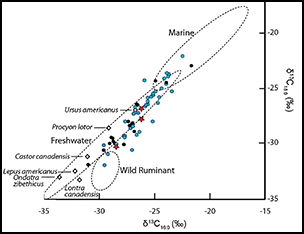Article contents
Something fishy in the Great Lakes? A reappraisal of early pottery use in north-eastern North America
Published online by Cambridge University Press: 18 September 2019
Abstract

Lipid residue analysis has recently been applied to investigate the adoption of pottery by Early Woodland hunter-gatherers in north-eastern North America. Results, however, have proven contradictory, especially regarding the extent to which early ceramics were used for processing aquatic resources. Here, the authors argue that this inconsistency is due to the use of different analytical procedures and criteria for identifying aquatic organisms, rather than any actual variations in pottery use. By applying robust analytical criteria and methods to Early Woodland pottery from the Great Lakes region, the authors present evidence supporting their hypothesis that such pottery was indeed used for processing aquatic resources.
- Type
- Method
- Information
- Copyright
- Copyright © Antiquity Publications Ltd, 2019
References
- 3
- Cited by




